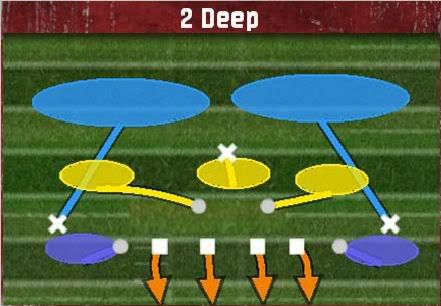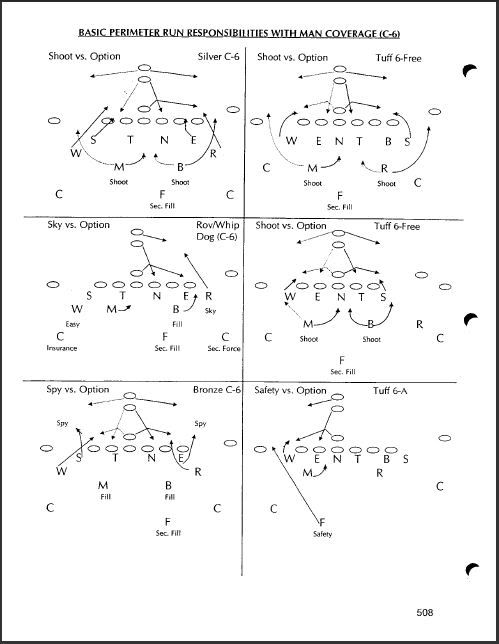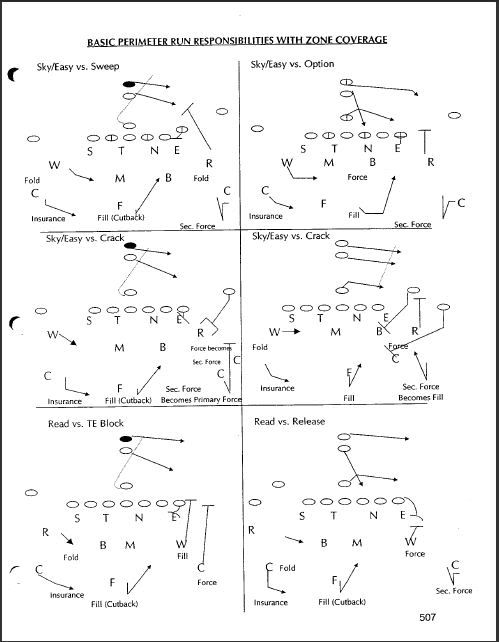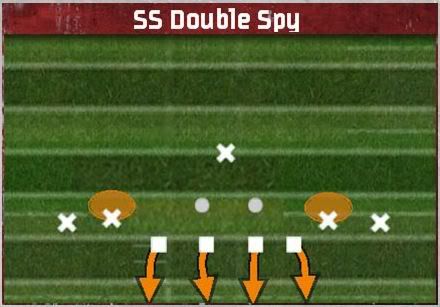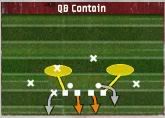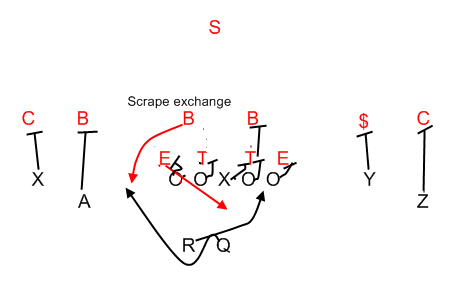The 3-5 (or 3-3 Stack) is like the 3-4 on steroids. It gives you the ability to leave your opponent clueless on where the pass rush is coming from with 3 down linemen. You s necessarily need a “Jack” Linebacker, as the 3-4 employs. I like to employ a the first string SS and the other a OLB/SS hybrid, or a larger Safety type. Same theory as the “Jack” linebacker that is a DE/OLB thats a pure pass rusher that can play either standing up or with a hand in the dirt.
When I used the 3-3-5 in 10 the hardest thing for me was to stop the run. Luckily I found some good run fits verses people who try to bring the power run game to try to rip the 3-man line.
Gaining and Maintaining Gap Control
Typically, a 3-front defense is a two gap type of scheme. What that means is you're required to read and react to close the gap to the playside. You have keys in the offense, most notably the offensive linemen in front of you. If a guard pulls, he's going to bring you to the football the majority of the time. If the offensive lineman pass sets, you're probably going to rush the QB (unless a blitz is on, then responsibility CAN change to an occupier role). The truth is, they have to make a read and react. The nose, for example, will attack the center and slide into a gap as a play develops. Some of the best noses don't have to engage and react, they can react at the snap because they see what's going on. They are responsible for both A Gaps technically. In the game the key to improving your gap control is using slant stunts with you Defensive Linemen mixed in with blitzing Linebacker or two.
One Zone Blitz/Run Fit that I love to run is the Crash 3 Play from the Stack alignment.
The adjustment for this play is simple. Only thing you need to do is slant the line to towards the TE and user the blitzing linebacker.
Linebacker Pressures
Gap Pressures: Your LB’s must press the Open Gaps, You must know which gap is going to be vulnerable and blitz that gap with a LB, You can manipulate this by successfully manually blitzing, once your opponent decides to start shifting the line to the side that you’re blitzing from pulling a bait and switch and throwing in some F@G defense into the game should throw them off a bit. You also have to know which gap will be open for the LB. Recruiting wise for this defense your Mike LB is the anchor of your defense and needs to be a Ball Hawk. The defensive line movements and stunts are also important when it comes to the 3-3/3-5’s gap pressures and control. There are only 4 basic DL movements are available: Spread, Pinch, Crash right and Crash left. Adding a blitzing LB will also do wonders for your gap control on your run fits.

In sum, to play great run defense you must attack your assigned gap, shed blockers, pursue the ballcarrier, and make the tackle.This breakdown of gap pressures in the 3-3-5 should help you with understanding the plays that your calling and make you a better play caller.
